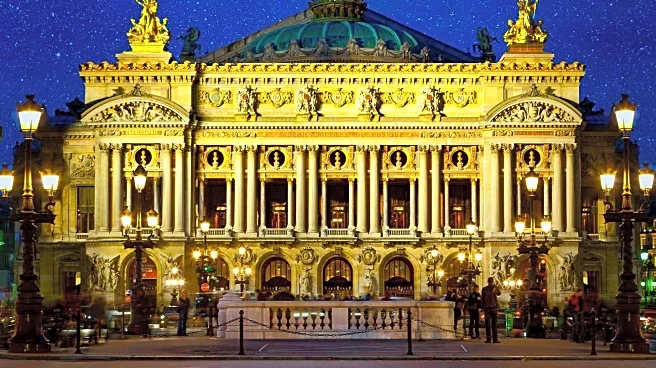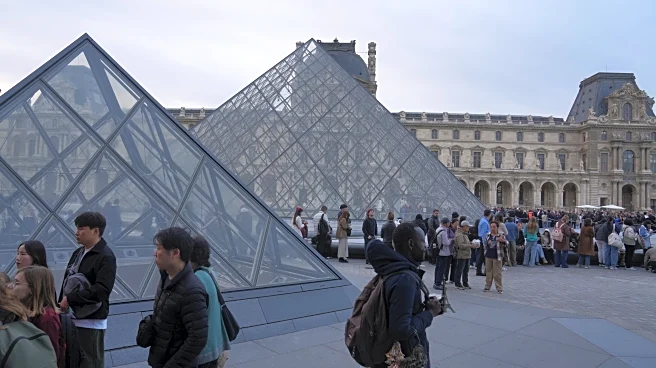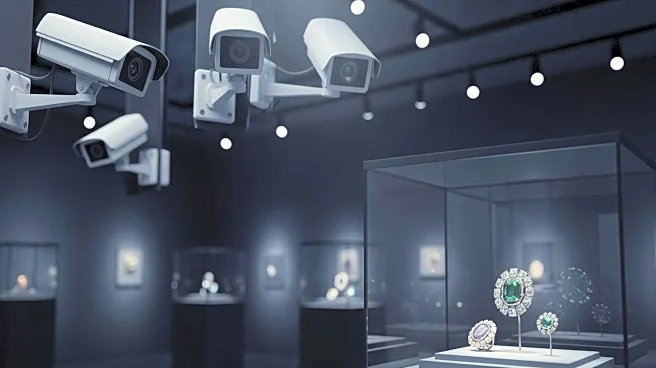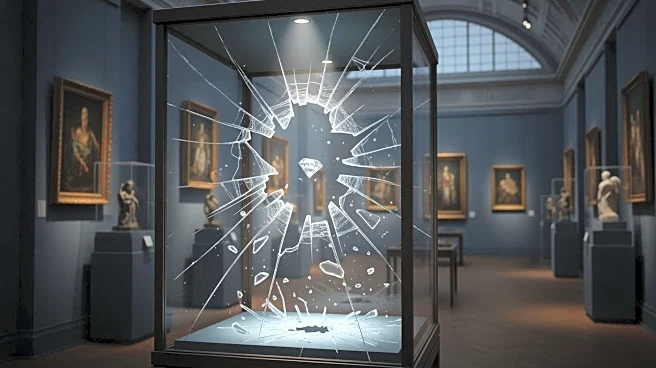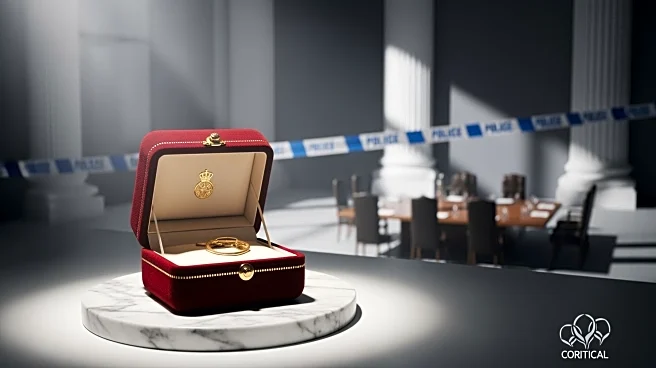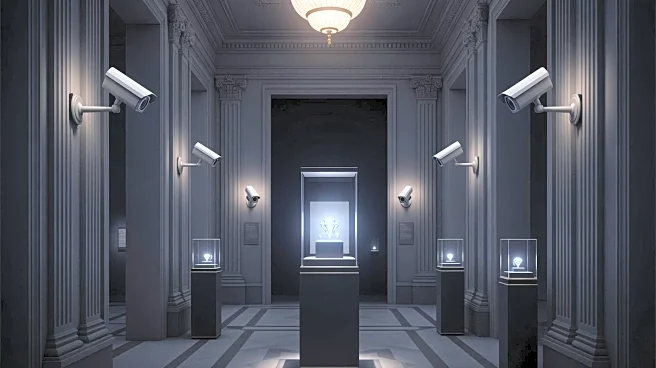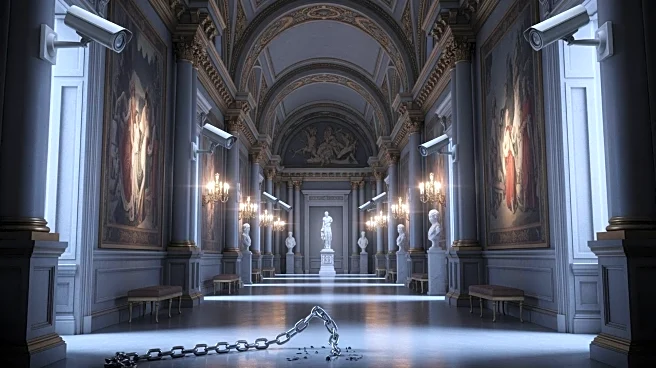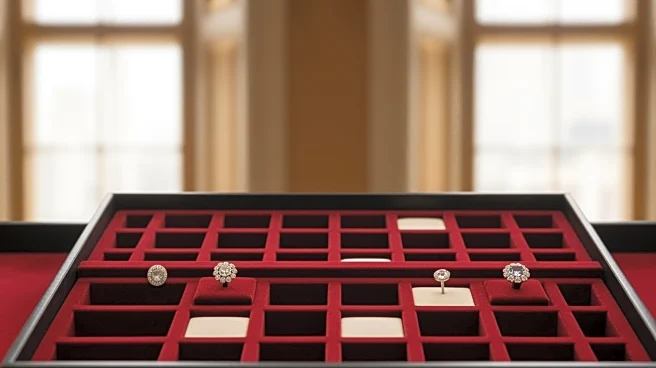What's Happening?
French authorities are investigating a daring heist at the Louvre Museum in Paris, where thieves stole jewels valued at $100 million. The robbers, captured on video, made a slow getaway using a mobile
lift attached to a stolen truck. The footage shows two men, one in a neon vest and another in a motorcycle helmet, lowering themselves from the museum's second floor. After reaching the ground, they escaped on motorized scooters. The heist involved four suspects who used an extendable ladder to enter the museum and cut through a glass case to steal the jewels. Despite triggering a security alarm, the thieves managed to flee, leaving behind a motorcycle helmet and a glove. French authorities are actively searching for the suspects.
Why It's Important?
The theft of such high-value jewels from a renowned institution like the Louvre highlights vulnerabilities in museum security systems, potentially prompting a reevaluation of security protocols in cultural institutions worldwide. The incident underscores the audacity and sophistication of modern art thieves, raising concerns about the protection of cultural heritage. The stolen jewels, once belonging to French royals, represent significant historical and cultural value, and their loss is a blow to France's national heritage. The heist may also impact tourism, as security concerns could deter visitors from major cultural sites.
What's Next?
French authorities are expected to intensify their search for the suspects, possibly collaborating with international agencies like Interpol to track the stolen jewels. Museums globally may review and upgrade their security measures to prevent similar incidents. The investigation could lead to arrests, but recovering the jewels intact remains uncertain. The public and media attention on the case may pressure authorities to resolve the matter swiftly.
Beyond the Headlines
The heist raises ethical questions about the illicit art market and the demand for stolen cultural artifacts. It highlights the challenges in balancing public access to cultural heritage with the need for security. The incident may lead to discussions on the role of technology in enhancing museum security and the importance of international cooperation in art crime investigations.


